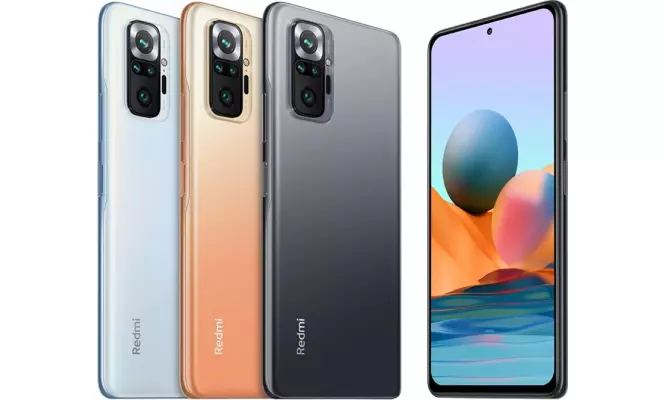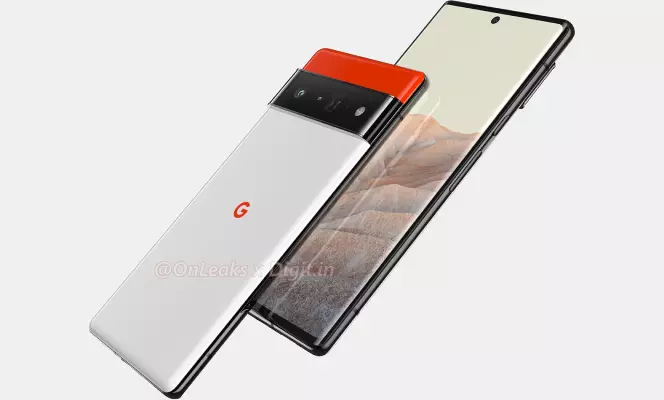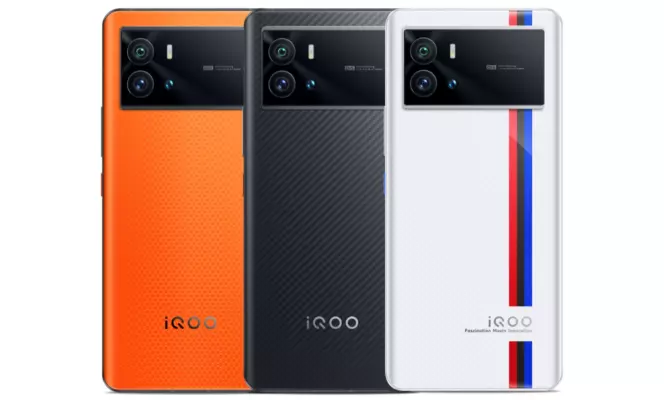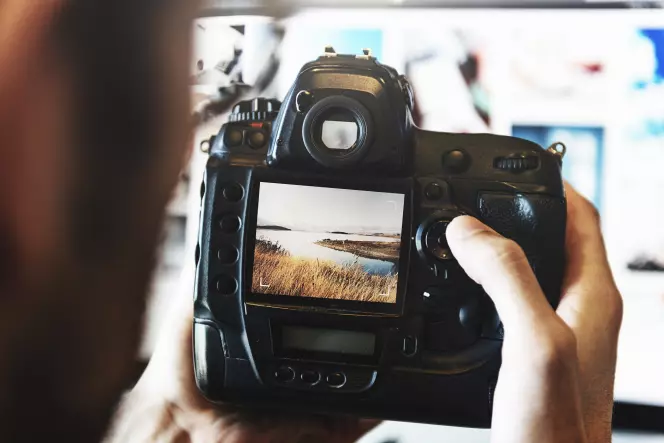- iPhone 13 Pro
- Xiaomi Redmi Note 10 Pro
OnePlus 9 Pro
Quick summary
Simply the best: iPhone 13 Pro
iPhone 13 Pro is a golden standard when it comes to phone cameras. A 12MP ultra-wide camera and a 12MP telephoto camera with a 3x optical zoom, what else can we dream of?
For Android lovers: Samsung Galaxy S21 Ultra
This model is a fully-fledged alternative to the iPhone 13 Pro for those who prefer Android devices for some reason. It also has a 12 MP ultra-wide camera, along with 108 MP wide-angle camera and two 10 MP telephoto cameras.
Also check out: Movavi Video Editor
A great addition to any videographer’s smartphone. Once you’ve recorded your video, you’ll need to trim and edit it. That’s where Movavi comes in. The app lets you enhance and edit videos and, what is more, supports direct upload to TikTok.
At Movavi, we’re committed to providing you with verified information only. Here’s what we do to ensure this:
When selecting products to include in our reviews, we research both demand and popularity.
All products mentioned in this article have been tested by Movavi Content Team.
When testing, we compare key parameters, including video and audio trimming, visual effects, stabilization, video quality adjustments, saving and sharing videos, and other significant features.
We study user reviews from popular review platforms and make use of this information when writing our product reviews.
We collect feedback from our users and analyze their opinions of Movavi software as well as products from other companies.

What’s the best phone for video recording in 2024? Let’s compare the options and see the difference between them.
Disclaimer: We use affiliate links to the products mentioned on this page. When you click an affiliate link and make a purchase, we receive commissions. If you want to support our portal, you can use the links. Otherwise, you can find the recommended products using a search engine.
#CommissionsEarned

Best for: best footage quality overall
Price: from $999
iPhone 13 Pro is a golden standard when it comes to phone cameras. Three 12 MP cameras at the back of the phone in combination with perfectly-tuned camera software make it the best smartphone for video recording in 2022 according to platforms like Tom’s Guide, TechRadar, and Mobile Motion.
iPhone 13 Pro can record video up to 4K in 60 FPS. The colorful Super Retina XDR display gives a fair representation of your footage.
Although it may seem that a set of 12 MP cameras is worse than what many Android cell phones have to offer. Also, Android phones may boast of having much more features than even the most recent iPhone. However, even the most expensive Android devices cannot match the quality of the final footage iPhones provide. The key to success consists of several factors:
The balance between cameras. Many smartphones are made with an excellent main camera and a few others with much lower resolution (e.g., 64 MP for the main camera and 2 MP for the accompanying ones). This influences the quality of the footage made in different non-default mods. Since all of the cameras of iPhone 13 Pro are equally good, all the features Apple provides work perfectly providing the best pictures and videos.
A larger lighting sensor. It lets the cameras pick up more light, which improves the footage taken in dim lighting conditions.
Optical image stabilization. The stabilization iPhones give is unmatched by most Android phone producers. It gives the final footage and pictures the crispiness that makes the image really pleasing.
Camera software. Many Android users point out that their default camera apps give worse quality than some apps found on Google Play. For iPhone users, it’s the opposite: the default camera application gives the best footage possible, unlike apps like Instagram or Snapchat. The reason is the amount of time, money, and effort Apple puts into its photo and video software. Since Apple is the only one producing iOS devices, they can craft software that works perfectly with the hardware they put in iPhones. Meanwhile, Apple devices are produced by many companies, so the default software cannot cater to all of them: some cameras will always be more adapt to the default software, others will be less.
As for the downsides, the front camera in iPhone 13 Pro is rather average for what the market has to offer. So, here’s a tip all the best vloggers use: try filming yourself with a rear camera. If you don’t move much, it’s easy to stay in the middle of the frame, and you’ll get the best footage quality the current market has to offer.
Concerning iPhone 13 Pro Max and the default version, the main difference between them is the screen size. Thus, it’s only worth investing if you prefer having a more sizeable phone with a bigger display. If all you’re concerned with is the camera, there’s no reason to spend more on the device.
Front camera: 12 MP wide camera, SL 3D depth/biometrics sensor
Rear cameras: three 12 MP cameras: telephoto, wide, and ultra-wide cameras; TOF 3D LiDAR depth scanner
Extra features:
Macro mode
Cinematic mode
3x optical zoom
Photographic Styles
Pros:
Best phone camera overall
Sustainability and longevity of the hardware
iOS 15
Cons:
The highest price of all the options
Average front camera
#CommissionsEarned

Best for: best on-a-budget solution
Price: from $230
If you’re looking for the best camera phone in the price range up to $300, Xiaomi Redmi Note 10 Pro is a go-to choice. With a 120Hz OLED display, glass back, and smooth design, it’s hard to believe from the first glance that this phone is that inexpensive.
The main selling point of this smartphone is its set of cameras. With the 108MP f/1.9 primary camera, you can film videos up to 4K. The macro camera does not disappoint: it gives a sharp picture when another phone of the same budget would blur the image immensely. The night mode works really well, with little to no noise on the pictures. The main downside for shooting videos is that it lacks stabilization when recording in 4K. Also, in the 4K mode, it can only film in 30 FPS. Thus, if you’re an all-or-nothing type of user, this phone will likely not suit you. But if you’re up for decent video quality on a budget, check this smartphone out.
Front camera: 16 MP wide camera
Rear cameras: 108 MP wide-angle camera, 8 MP ultra-wide-angle camera, 5 MP telemacro camera, 2 MP depth sensor
Extra features:
Movie Frame
Vlog mode
Dual video (filming from both cameras at the same time)
Long exposure
Moving object tracking
Ultrawide distortion correction
Face distortions correction
Pros:
Fine night mode
Long battery life
Cons:
No 5G Internet connection
No stabilization if filming in 4K
#CommissionsEarned

Best for: expert-approved phone camera
Price: from $800
OnePlus 9 Pro works great as a mobile for video recording due to its camera being able to film in 8K 30 FPS and in 4K 120 FPS. Thanks to OnePlus’s cooperation with camera experts from Hasselblad, they’ve managed to make the image from the camera one of the best for Android phones. The video stabilization is decent. Also, the night mode photos look almost as sharp as the iPhone ones. Other advantages of the phone include fast charging and a beautiful 120Hz display.
Front camera: 16 MP wide camera
Rear cameras: 48 MP main camera, 50 MP ultra-wide camera, 8 MP telephoto camera, 2 MP monochrome camera
Extra features:
Super slow motion: 1080p 240 FPS, 720p 480 FPS
Nightscape
Super macro
Tilt-shift mode
Cat/dog face focus
Focus tracking
Pros:
4K 120 FPS
Decent video stabilization
Cons:
Some users say that the phone feels rather slippery
5G isn’t available for some wireless operators
#CommissionsEarned

Best for: extreme zooming capabilities
Price: from $775
There aren’t many companies that can compete with Apple in terms of pictures and video quality of their phones. Samsung is one of them. Samsung smartphones are considered the top-notch Android phones overall. Galaxy S21 Ultra’s camera of 108 MP matches these high standards.
The main feature this high-end camera has to offer is the extreme zooming capabilities unmatched by any Android and iOS phone existing. The picture stays sharp even in 30x zoom. However, the maximum is the surprising 100x zoom. At this mode, the image surely gets mushy, but the fact that this kind of zooming is even possible makes it a unique device by itself. The feature can be useful for those who enjoy filming wildlife.
As for the video, Galaxy S21 Ultra can record in 8K 30 FPS and 4K 60 FPS. Even the front camera can film in 4K 60 FPS! The 40 MP camera allows you to make more flattering selfies in the portrait mode than even with iPhone 13 Pro. This makes Samsung a great phone for videography and taking pictures.
Front camera: 40 MP wide camera
Rear cameras: 12 MP ultra-wide camera, 108 MP wide-angle camera, two 10 MP telephoto cameras
Extra features:
Authentic selfie
Night mode
Extreme zoom
Forced stabilization
Pros:
Great zoom and stabilization
Excellent front camera
8K video recording
Cons:
No microSD card slot, which is unusual for Android phones
#CommissionsEarned

Best for: on-a-budget Apple experience
Price: from $399
As said previously, Apple produces some of the best video recording phones on the market. The most recent iPhones are very pricy, even though they are definitely worth it. If you’re looking for the most cost-efficient iPhone, you should try iPhone SE, the 2020 version.
There’s only one 12 MP camera on the back. However, with Apple software being so good and tuned for the hardware, it’s still great for making videos. It provides you with most of the recent iPhone camera features. Since iPhone SE 2020 gets all the most recent iOS updates, it will last you at least a few years until the hardware won’t be able to match the software requirements.
Recently, this model has been replaced with iPhone SE 2022 version, the 2020 one getting discontinued. The newer model has a 5G connection. The changes in no way affect the camera: it’s still a single 12 MP sensor. If you feel that the addition of 5G justifies the price increase, you can get the new version. If not, you can still get the older version in some stores.
Front camera: 7 MP
Rear cameras: 12 MP wide camera
Extra features:
Digital zoom up to 5x
Portrait mode
Optical image stabilization
Pros:
The combination of a decent camera, longevity, and reasonable price in an iOS device
Touch ID many people lack in more recent models
Cons:
No 4K recording
#CommissionsEarned

Best for: speech enhancement on the recorded videos
Price: from $899
Google has entered the smartphone market not that long ago, and their new flagship is already one of the best phones for filming you can currently get. The company has put a lot of resources to get the best camera on their phone and back it up with suitable software. Although the main camera is 50 MP (and not 108 MP, unlike the one by Samsung), it provides great saturation and sharpness. Another advantage Google Pixel 6 Pro boasts of is the enhanced audio recording: the Speech Enhancement feature filters out background noise making your voice sound clearer. However, some users are displeased with the battery life. Take this into consideration if you need a phone for video editing and not just filming.
Front camera: 11.1 MP ultra-wide camera
Rear cameras: 50 MP Octa PD Quad Bayer wide camera, 12 MP ultra-wide camera, 48 MP telephoto camera
Extra features:
4x optical zoom
Magic Eraser to remove unwanted objects from photos
Portrade Mode
Dual Exposure Controls
Night Sight
Pros:
Better speech recording
Cons:
Comparatively short battery life
#CommissionsEarned

Best for: taking pictures during daytime
Price: from $322
Huawei phones are hard to find in the US because of the ban against selling these devices in the country. However, they’re easy to come by in many other parts of the world. And since Huawei smartphones are some of the best in their price range, they’re definitely something worth considering.
The quad-camera setup provides a good experience for taking pictures and filming in the daylight. However, it doesn’t do well in dim light, even in Night mode. The ultra-wide camera gives you great pictures for the phone’s price point. For the selfie camera, the 16 MP lens works quite well, but, again, fails to capture sharp images in non-perfect lighting.
Front camera: 16 MP wide camera
Rear cameras: 64 MP high-res camera, 8 MP ultra-wide-angle camera, 2 MP depth camera, 2 MP macro camera
Extra features:
Night mode
Portrait mode
Panorama mode
Stickers mode
Super Macro mode
High-Res mode
AI Scene Detection
Pros:
Low price point
Cons:
The performance in dim light isn’t the best
The smartphone isn’t officially available in the US

Best for: 5-axis gimbal stabilization
Price: from $818
If you’re looking for not just a good video recording phone, but a gadget with eye-catching design, try Vivo iQOO 9 Pro. It can record footage in 8K 30 FPS. Thanks to the 5-axis gimbal stabilization, it provides non-shaky footage where many other phones fall flat. Unfortunately, this model isn’t shipped globally, so it may be hard to come by in your region. However, if you can get it, it definitely deserves your attention.
Front camera: 16 MP wide camera
Rear cameras: 50 MP wide camera, 16 MP telephoto camera, 50 MP ultra-wide camera
Extra features:
150-degree field of view of the ultra-wide camera
Portrait mode
Beauty mode
Pros:
Eye-catching design
Cons:
Struggles when shooting against the direct light
Not available in many parts of the world
#CommissionsEarned

Best for: 4K 60 FPS recording for a lower price
Price: from $584
If you think it impossible to get 4K 60 FPS recording in a phone that’s under $800, Vivo X60 Pro will change your mind. The set of three rear cameras accompanied by a decent stabilizer are great for filmmaking. As for photos, the AI on the camera software tends to process wider shots worse than the closeups. The 32 MP front camera gives vibrant selfies, however, the portrait mode seems to overblur the image. So, if you come by this model, don’t hesitate to give it a try.
Front camera: 32 MP wide camera
Rear cameras: 48 MP wide camera, 13 MP telephoto camera, 13 MP ultra-wide camera
Extra features:
Pro Sports Mode
Extreme Night Vision 2.0
Long Exposure Mode
Pros:
Good footage stabilization
Filming in 4K 60 FPS
Cons:
The portrait mode may seem too blurry

Best for: day-to-day on-a-budget filming
Price: from $230
Realme 8s 5G is a steady on-a-budget choice. Although the video quality the phone can produce is limited to 1080p, it gives a good result if filming in the daylight. Electronic Image Stabilisation manages to reduce the shakiness quite a bit. The addition of 5G makes this phone compatible with other models of the same price range.
Front camera: 16 MP wide camera
Rear cameras: 64 MP wide camera, 2 MP macro camera, 2 MP depth camera
Extra features:
AI Scene Detection
Portrait mode
Macro mode
Night mode
Pros:
The combination of 5G and good camera in a low-cost phone
A phone case comes in the box
Cons:
Only 1080p filming

In terms of the footage quality, no. A DSLR provides footage far better than any smartphone camera can, including the most high-end ones. The reason is that the lens of the phone cannot be big enough to compete with a full-size camera. It would be too inconvenient to use and carry around. You cannot find a professional photographer or videographer carrying the newest iPhone Pro instead of a camera.
However, if you’re not a pro, having a camera phone can be more beneficial than getting a DSLR camera. The main advantage of a smartphone is that it makes sharing videos and pictures online much easier since you don’t have to transfer files from a camera to a computer. Also, posting images and videos on digital platforms tend to decrease the quality of the original footage (e.g., many YouTube content creators complain that the footage looks worse on YouTube than in the original file). So the quality a phone camera provides is enough to fill your social media with great pictures and videos without having an extra step of transferring videos from one device to another.

Both the App Store and Google Play are filled with custom camera apps suggesting replacing the ones installed on your phone by default. Some of them are free, others require a subscription or some sort of payment for additional features. One can’t help but wonder: are these side apps worth investing time and money?
If you’re an iPhone user, not really. The software Apple provides iPhones with is perfectly optimized for the hardware, there’s no need to get a side app. You can try it if you want more features than what the iPhone app has by default, but outside of this, there’s probably no app that provides better quality footage than the one installed by default.
If you use Android, you may need a side-party app to improve the camera performance. Since many companies are producing Android phones, the default apps cannot cater to every camera, so the performance differs from model to model. If you’re not happy with the videos or images the built-in app provides, try the following apps:
Want to improve the footage you take with the camera on your phone? Try the following tips:

The main issue your footage may look worse than you want is that youк camera keeps shaking. The ultimate solution is to get a 3-axis stabilizer. In combination with the stabilization in the phone, your footage may look pretty impressive. Here are some stabilizers with the best reviews on Amazon:
#CommissionsEarned
If you cannot spend much money on another gadget or don’t have time to wait for the delivery, try a simple trick. Put your elbows together, then set them on a surface, e.g., a table or a bench. If you cannot put your elbows on a flat surface, try pressing them against your torso. Grab the phone with both hands and press the insides of your wrists together, if possible. This will give you a stable position in which the phone won’t move much. If you need to turn, try doing this with your entire body, not just with your hands. This may be inconvenient, but it should make the footage less shaky.

By default, phone producers value the space in your phone memory more than the quality of the final footage. Go to the camera settings to check if your phone is recording in the desired resolution and frame rate.
Since the right software is just as important to the video as the hardware, you should find the right app that suits your device. Read the reviews on Google Play and other websites to find the right software. You can start by checking out the list below:

Although default photo and video viewing apps usually have some simple editing features, they cannot compete with a fully-fledged video editor. Here are a couple of options for you to try out.
If you want to edit videos on your phone, try Movavi Clips. This app has versions for both iOS and Android. It not only lets you improve the footage by changing the brightness, saturation, and acutance but also allows you to add filters, transitions, stickers, etc. It’s ideal for making short videos for your social media.
If you want to take advantage of the 4K and 8K videos recorded on your phone, you need to edit videos on a desktop. We suggest using Movavi Video Editor. With features like noise reduction, stabilization, and color-correcting, you’ll manage to bring your footage to the next level. Get the trial version for Windows or Mac and check all the advantages by yourself.
To finalize, let’s put together all the advice on choosing the right phone for filmmaking given in the article:
If you want the best quality of the footage, get ready to invest in a flagship phone. The one by Apple is considered the best on the market. The Samsung one is following right behind.
Do not get tricked by the MP count on the main camera of an Android phone. If you want to take advantage of macro filming and super-wide-angle shots, make sure other cameras are at least decent.
Check out the extra features the phone has to offer. Some provide unique abilities like removing objects from photos or beauty mode.
If you intend to edit videos on the same phone, make sure the device has long battery life.
Check out several detailed reviews before purchasing a device. Since good camera phones are costly, you’d better make sure your investment pays off.
Movavi Video Editor
Сreate awesome videos easily
*The free version of Movavi Video Editor may have the following restrictions depending on the build: watermark on exported clips, 60-second video or 1/2 audio length limit, and/or some advanced features unavailable when exporting videos.


Have questions?
If you can’t find the answer to your question, please feel free to contact our Support Team.
Join for how-to guides, speсial offers, and app tips!
1.5М+ users already subscribed to our newsletter